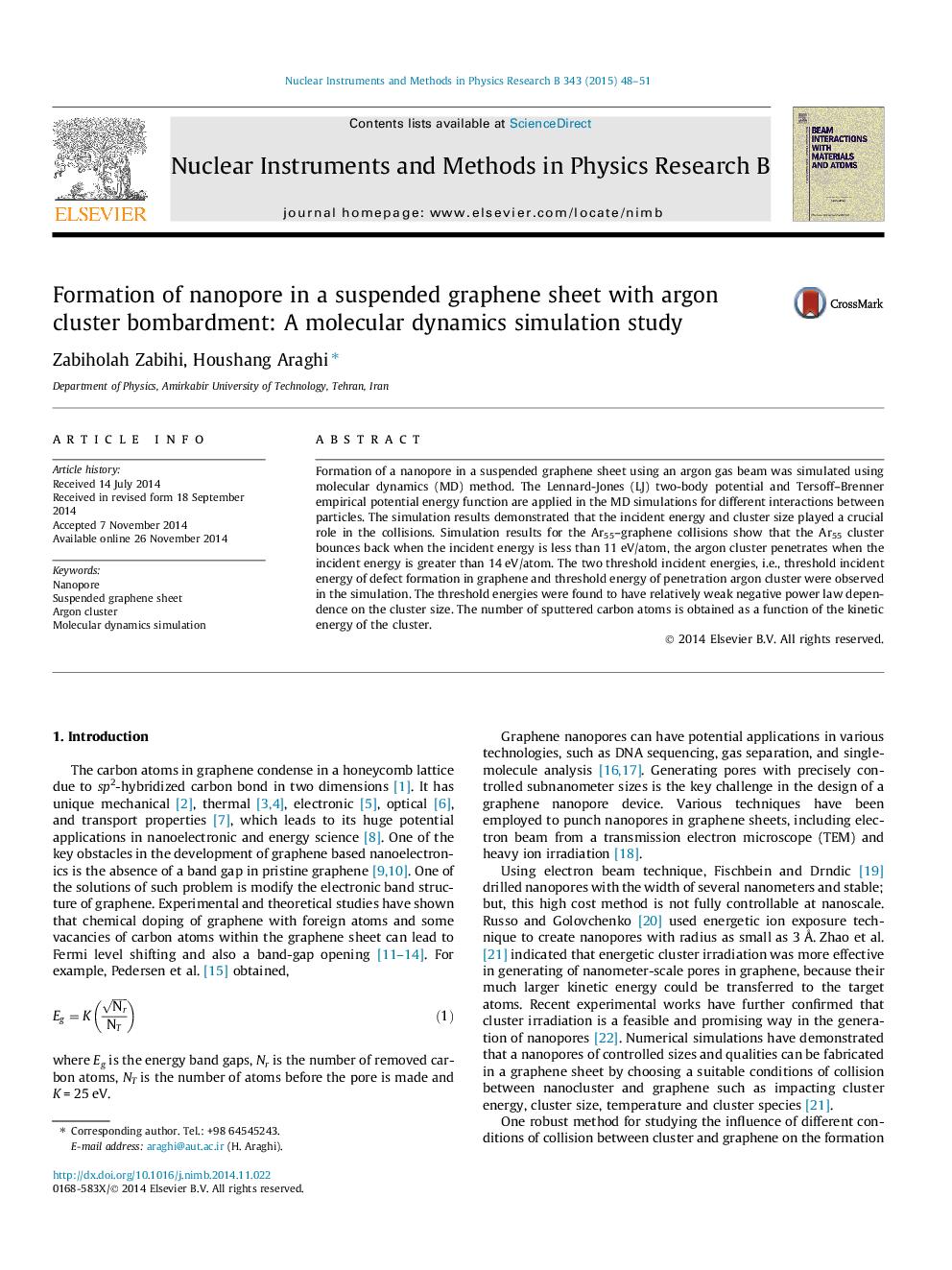| Article ID | Journal | Published Year | Pages | File Type |
|---|---|---|---|---|
| 1680723 | Nuclear Instruments and Methods in Physics Research Section B: Beam Interactions with Materials and Atoms | 2015 | 4 Pages |
Formation of a nanopore in a suspended graphene sheet using an argon gas beam was simulated using molecular dynamics (MD) method. The Lennard-Jones (LJ) two-body potential and Tersoff–Brenner empirical potential energy function are applied in the MD simulations for different interactions between particles. The simulation results demonstrated that the incident energy and cluster size played a crucial role in the collisions. Simulation results for the Ar55–graphene collisions show that the Ar55 cluster bounces back when the incident energy is less than 11 eV/atom, the argon cluster penetrates when the incident energy is greater than 14 eV/atom. The two threshold incident energies, i.e., threshold incident energy of defect formation in graphene and threshold energy of penetration argon cluster were observed in the simulation. The threshold energies were found to have relatively weak negative power law dependence on the cluster size. The number of sputtered carbon atoms is obtained as a function of the kinetic energy of the cluster.
